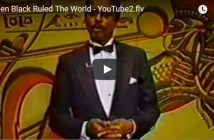Source: http://atlantablackstar.com
Col. Joshua John Ward of Georgetown, South Carolina: 1,130
Known as “King of the Rice Planters,” Ward had 1,130 enslaved Blacks on the Brookgreen plantation in South Carolina. In 1850, Ward controlled six large plantations and produced 3.9 million pounds of rice.
Dr. Stephen Duncan of Issaquena, Mississippi: 858
Duncan was a businessman who collectively enslaved more than 2,000 Blacks during his time as one of the best cotton producers. The most he enslaved at one time was 858 in Issaquena. Duncan owned more than 15 plantations in Mississippi and Louisiana.
Houmas House Plantation A.K.A. ”Sugar Palace”
John Burneside of Ascension, Louisiana: 753
Burneside was the largest sugar producer in the country during his time at the Houmas Plantation. Before he died, he owned 10 different plantations.
Meredith Calhoun of Rapides, Louisiana: 709
Plantations belonging to Calhoun surrounded the riverboat landing that would one day become the town of Colfax. At the peak of production, the Calhoun plantations held more than 700 Blacks in slavery and produced more cotton than any other property in Louisiana. The Calhouns established one of the largest sugar mills in Louisiana, and the estate was valued in excess of $1 million in the 1860 census, a considerable holding at that time.
William Aiken of Colleton, South Carolina: 700
Aiken was one of the state’s wealthiest citizens, owner of the largest rice plantation in the state – Jehossee Island – with over 700 enslaved Blacks on 1,500 acres under cultivation, almost twice the acreage of the next largest plantation. By 1860, Aiken owned the entire Jehossee Island, and the plantation produced 1.5 million pounds of rice in addition to sweet potatoes and corn — in the middle of the 19th century, rice was king in South Carolina – of the 10 largest cash crops in 1850, seven were rice, two cotton and one sugar. After the Civil War, the plantation regained its preeminence, producing 1.2 million pounds of rice. Today, descendants of the Aiken family, the Maybanks, still own part of the island, having sold the remainder in 1992 to the U.S. as part of the ACE Basin National Wildlife Refuge.
Gov. John L. Manning of Ascension, Louisiana: 670
Manning owned at least two plantations holding 670 Blacks against their will. One in South Carolina and another in Louisiana. He was a major supporter of succeeding from the Union.
Col. Joseph A. S. Acklen of West Feliciana, Louisiana: 659
As the second husband to “the mistress of Belmont” Adelicia Acklen, Joseph Acklen tripled the value of his wife’s million-dollar estate. They had seven Louisiana cotton plantations; the 2,000-acre Fairvue Plantation in Gallatin, Tennessee; more than 50,000 acres of undeveloped land in Texas; stocks and bonds; and 659 enslaved Blacks.
Gov. Robert Francis Withers Allston of Georgetown, South Carolina: 631
His family was able to maintain two houses in Georgetown and several plantations, including the Allston ancestral home on the Pee Dee River, Chicora Wood — one of the five plantations Robert Allston owned, with over 900 acres and more than 600 enslaved Blacks.
Bonny Hall Plantation
Joseph Blake of Beaufort, South Carolina: 575
The Blake family enslaved Black people for generations on a rice plantation in Beaufort (Prince William’s Parish). Joseph Blake had two plantations, one in Prince William’s Parish and another in St. Peter’s Parish. The former one was called Bonnie/Bonny Hall, on the Combahee River, south of the town of Yemassee, with 330 acres.















